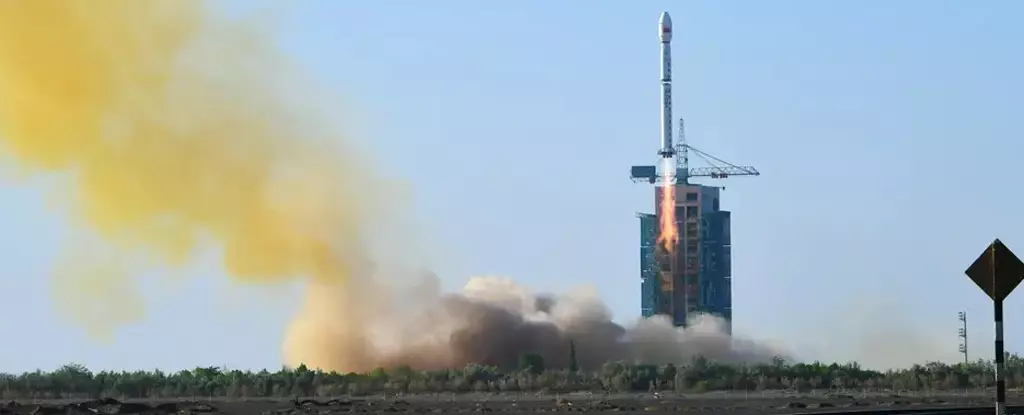The recent incident involving the accidental launch of the Tianlong-3 rocket by a Chinese space firm has raised significant concerns about the safety and reliability of the country’s space technology. The firm, Tianbing Aerospace Technology, stated that the launch was a result of a “structural failure” during a first-stage test of the rocket’s power system. This failure led to the rocket separating from its launchpad and crashing into a mountainside nearby, causing a dramatic fireball explosion.
The Tianlong-3 rocket, designed to deliver satellites to orbit, has been described by Tianbing as “comparable to Space X’s Falcon 9.” Both rockets are liquid-propellant and designed for reflight, with the Tianlong-3 capable of being partially reusable for up to 10 trips. The incident has sparked discussions online, with some Chinese people comparing the failure to the early challenges faced by SpaceX with its Falcon rockets. This comparison highlights the risks and complexities involved in developing and testing advanced space technology.
Tianbing Aerospace Technology is one of several Chinese private space rocket companies that have gained prominence in recent years. The company previously launched the Tianlong-2, another reusable rocket fueled by coal-based kerosene. With the introduction of the Tianlong-3, Tianbing aims to revolutionize China’s space industry by showcasing its power system capabilities. The nine-engine configuration of the Tianlong-3, touted as the most potent carrier rocket under development in the country, represents a significant step forward in China’s space technology advancement.
The incident with the Tianlong-3 comes at a time when Chinese leader Xi Jinping has emphasized the importance of innovation and collaboration in the country’s science sector. Xi urged for closer cooperation between the state and private firms to accelerate China’s technological development and compete effectively on a global scale. The need to “occupy the commanding heights of science and tech competition” highlights China’s ambition to establish itself as a leader in the space industry and other cutting-edge technologies.
The accidental launch of the Tianlong-3 rocket serves as a reminder of the challenges and risks associated with developing advanced space technology. It underscores the importance of rigorous testing and safety protocols to prevent such incidents in the future. While setbacks are inevitable in the pursuit of innovation, it is crucial for the Chinese space industry to learn from these failures and continue to strive for excellence in space exploration. The incident should prompt a thorough review of testing procedures and structural integrity to ensure the safety and success of future space missions.
The accidental launch of the Tianlong-3 rocket highlights the complexities and uncertainties of space exploration. It underscores the need for continuous improvement, collaboration, and innovation to overcome challenges and achieve success in the highly competitive space industry. The incident should serve as a catalyst for the Chinese space industry to reassess its practices, enhance safety measures, and strive for greater achievements in the pursuit of space exploration.


Leave a Reply